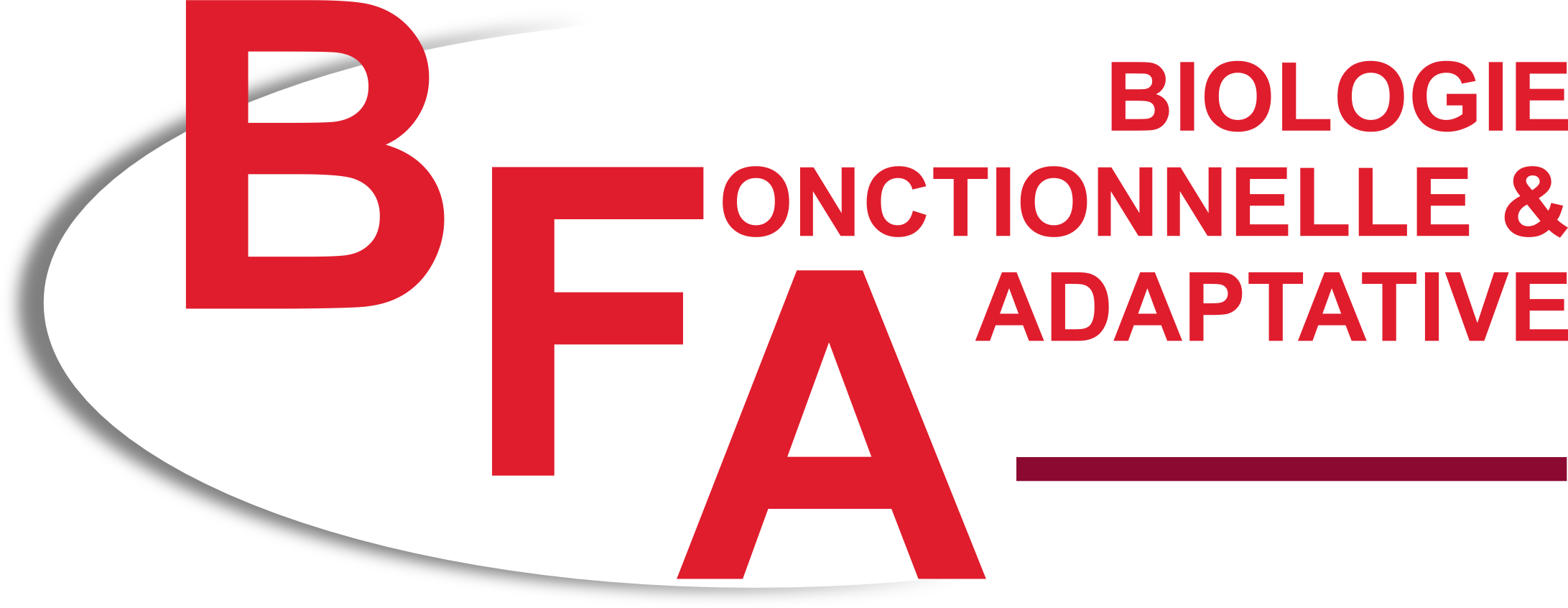Dr Susanne E La Fleur, Department of Endocrinology and Metabolism; Academic Medical Center, University of Amsterdam, the Netherlands.
Titre : A free-choice high-fat high-sugar diet: the brain’s response and the metabolic consequences.
Date : mercredi 12 mai 2010 à 10h30.
Lieu : Salle des séminaires de l’Institut Jacques Monod, Bâtiment Buffon, 15 rue Hélène Brion, pièce RdC Bas 18B, Université Paris Diderot, campus PRG.
Invité par : Serge Luquet.
pdf_2010-05-12_SeminaireBFA_Susanne_Lafleur.pdf
Résumé :
The consumption of sugar-sweetened beverages and saturated fat has been linked to risks for obesity and diabetes. In last decades, intake of sugar-sweetened beverages has clearly increased worldwide, and recent surveys have shown that consumption of both sugar-sweetened beverages and saturated fat (especially from snack foods) exceed recommended daily levels. It is, therefore, important to understand how consumption of dietary fat and sugar in solution contributes to the development of obesity and diabetes.
To mimic consumption in humans more closely, we use a rat model of obesity in which rats have free access to saturated fat, a 30% sugar solution and their normal chow pellet food (the so-called free-choice high-fat high-sugar (cHFHS) diet). When subjected to a cHFHS diet, rats were hyperphagic, accumulated adipose tissue, and increased plasma leptin concentrations. The hyperphagia persisted over weeks and rats also became more motivated to work for a sugar reward. The hyperphagia and obesity in these rats on a cHFHS diet were associated with glucose intolerance characterized by insulin resistance, and thereafter by reduced insulin secretion to a glucose load.
Interestingly, these changes in feeding behavior and glucose metabolism were specific to the combination of saturated fat and liquid sugar in addition to chow, since control groups on diets with the choice for “saturated fat and chow” (cHF diet) or the choice for “liquid sugar and chow” (cHS diet) increase adiposity and showed initial hyperphagia. After one week, caloric intake decreased to pre-diet levels. These groups also did not increase the motivation to gain a food reward and did not develop glucose intolerance (although at one week rats on a cHF diet and on a cHFHS diet were equally obese and had consumed equal amounts of calories). Thus, the “diabesity” characteristics were only observed in rats on a diet with the choice for “saturated fat, liquid sugar and chow”.
Since the brain is important in regulating behavior and glucose metabolism, we next determined whether alterations in neuropeptides in the arcuate nucleus of the hypothalamus (Arc) could explain changes observed in hyperphagia and glucose intolerance after consuming a cHFHS diet. Two neuropeptides, Neuropeptide Y (NPY) and proopiomelanocortin (POMC) are expressed in the Arc, and are known to affect both feeding and glucose metabolism. We showed that rats on a cHFHS diet for one week, increased NPYmRNA and decreased POMCmRNA, whereas in rats on a cHF diet, POMCmRNA increased and NPYmRNA decreased. In rats on a cHS diet, no changes in neuropeptides were detected. Thus, the changes in these two neuropeptide systems can explain why obese rats consuming “saturated fat, liquid sugar and chow” do and why obese rats consuming “saturated fat and chow”, or “liquid sugar and chow” do not show persistent hyperphagia and glucose intolerance. These data point towards an important role for the brain in diet-induced obesity.


